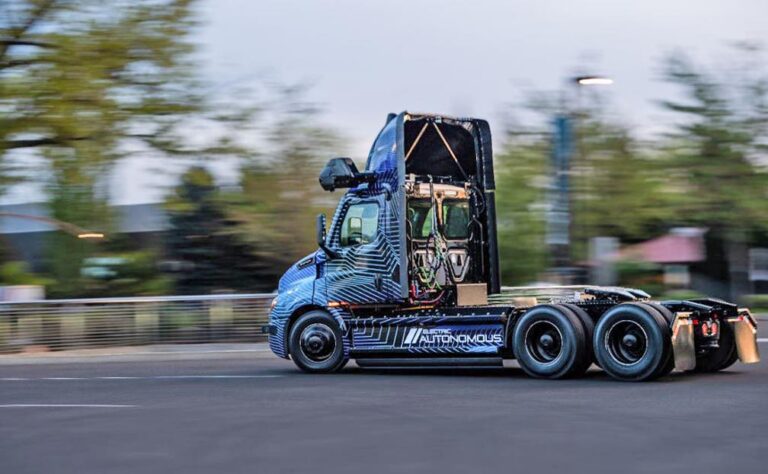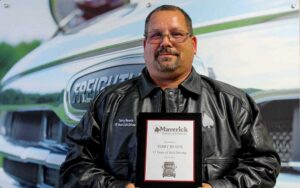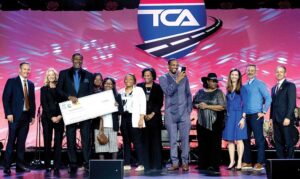PORTLAND, Ore. — By 2027, Daimler Truck North America (DTNA) officials say they hope to lead the world of sustainable transportation with their new autonomous electric Freightliner eCascadia Class 8 tractor.
In a Wednesday, May 8, announcement, DTNA said the goal is to pursue zero emissions and increased road safety using “the two most promising technologies to deliver on that vision.”
The truck is based on a production battery-electric Freightliner eCascadia and is equipped with Torc Robotics’ autonomous driving software and the latest Level 4 sensor technology, according to a news release.
Torc Robotics is Daimler Truck’s independent subsidiary for autonomous virtual driver technology.
Level 4 is considered “high automation,” where the vehicle performs all driving tasks under specific circumstances, according to autonomous software company Synopsys.
Geofencing — the use of GPS or RFID technology to create a virtual geographic boundary, enabling software to trigger a response when a mobile device enters or leaves a particular area — is required, and human override is still an option.
“While still a research and advanced engineering project, the autonomous vehicle has the potential to evolve into a modular, scalable platform that is propulsion agnostic for flexible use in different trucking applications,” according to the news release. “The goal is to offer customers a choice of the right vehicles for their specific business and transportation needs.”
DTNA has been developing and testing autonomous truck technology since 2015, when it revealed the Freightliner Inspiration Truck as the first licensed Level 2 autonomous commercial truck to operate on open public highways in the United States.
At Level 2 automation, the vehicle can control both steering and accelerating/decelerating, but the automation falls short of self-driving because a human sits in the driver’s seat and can take control of the car at any time, according to Synopsys.
DTNA officials say they aim to enter the market with production Level 4 autonomous trucks in the United States by 2027.
Torc has been testing autonomous-ready Freightliner Cascadia trucks in real-world applications with selected logistics companies such as Schneider and C.R. England, successfully moving customer freight autonomously on its test route between Phoenix and Oklahoma City, over the past year.
“By combining zero-emission and autonomous technologies in one product, we are testing solutions for challenges our customers are likely to face in the future,” said John O’Leary, president and CEO of Daimler Truck North America. “We want to give them choices that allow them to do what they do best: keep the world moving today and well into the future. That takes a lot of foresight, questioning, testing, learning, improving and co-creating with our customers years in advance to ultimately find the right solution. This truck is a great example of the beginning of that development process.”
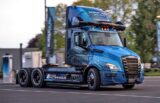
Joanna Buttler, head of Global Autonomous Technology Group at Daimler Truck, added: “Together with Torc, we are making significant progress towards introducing autonomous trucks in the U.S. by 2027. While we target autonomous trucks with conventional propulsion technology for this first market launch, we always look further into the future. We will employ an iterative approach to the development, testing and optimization of autonomous-electric technology, while exploring the most promising use cases in collaboration with our fleet customers.”
For the first time, the autonomous sensor suite and compute power, currently being tested on the autonomous diesel Cascadia, is packaged to fit the smaller day cab configuration of the battery electric eCascadia.
To ensure adequate cooling, Daimler Truck North America’s engineering team developed an advanced prototype air-cooling concept for the compute stack, which is efficiently positioned between the driver and passenger seats.
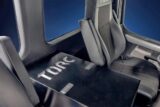
Customized software provides the autonomous system with control interfaces and feedback on vehicle status. The in-house designed sensor bar cover, which incorporates cameras, lidar sensors and radar sensors, improves aerodynamic performance while providing better protection from damage and soiling. Four additional 12-volt batteries provide enough high voltage power to ensure uninterrupted operation and increased efficiency and safety.
In the currently tested hub-to-hub application, the truck’s intent is to drive autonomously between freight centers along U.S. highway corridors. By identifying synergies between zero emissions and autonomous infrastructure in a future scenario, the charging infrastructure and autonomous freight hubs could be combined to charge and load simultaneously, further enhancing efficiency for carriers.
Born in Pine Bluff, Arkansas, and raised in East Texas, John Worthen returned to his home state to attend college in 1998 and decided to make his life in The Natural State. Worthen is a 20-year veteran of the journalism industry and has covered just about every topic there is. He has a passion for writing and telling stories. He has worked as a beat reporter and bureau chief for a statewide newspaper and as managing editor of a regional newspaper in Arkansas. Additionally, Worthen has been a prolific freelance journalist for two decades, and has been published in several travel magazines and on travel websites.








